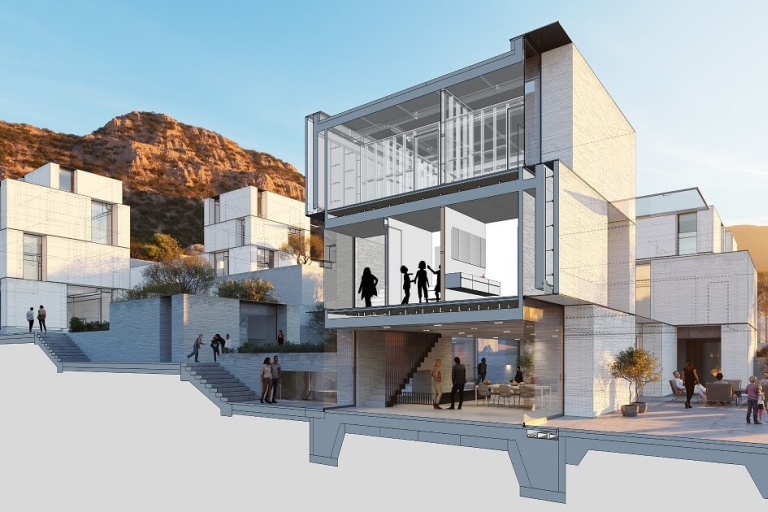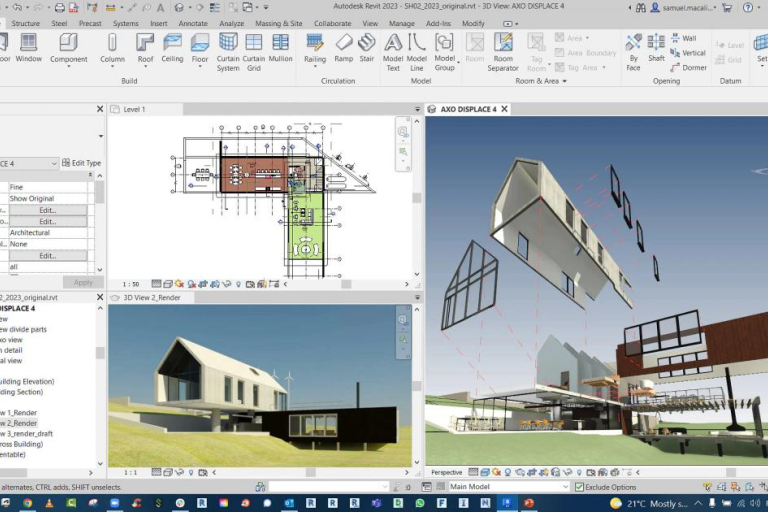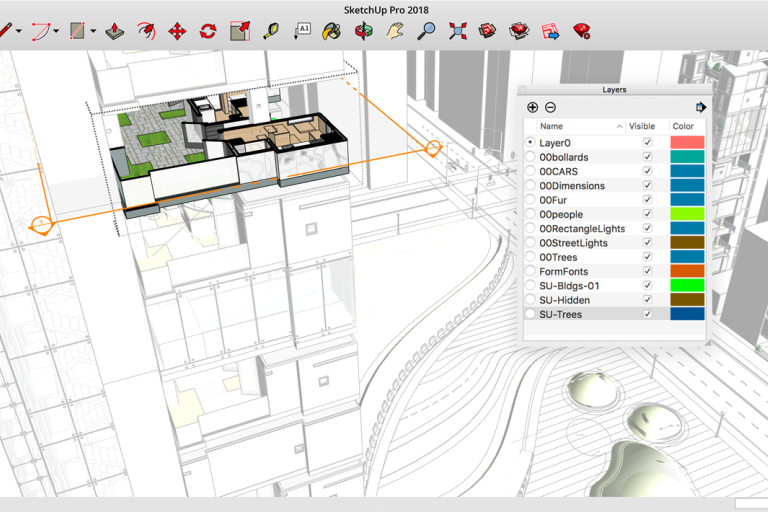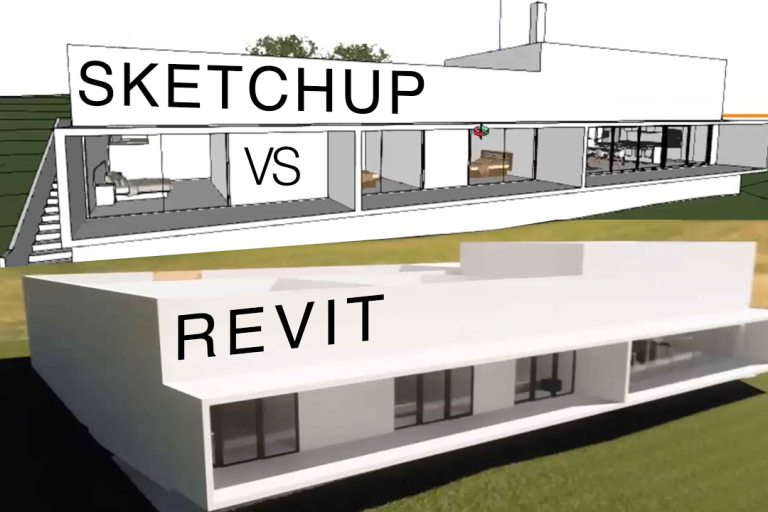In the world of architectural design, there are two major software players that designers often use: Revit vs SketchUp. These tools help turn creative ideas into actual buildings and structures. But they serve different purposes and have unique features.
In this discussion, we'll explore these differences, looking at what each software is good at, where they have their strengths, and where they might not be the best fit. Whether you're a professional architect or just someone interested in design, knowing these distinctions will help you pick the right tool and make the most out of it for your architectural projects.

Introduction about Revit vs SketchUp
Revit
Revit is computer software made by Autodesk. People in architecture, engineering, and construction use it to make detailed 3D models of buildings. Revit lets architects, designers, and engineers work together on projects by making a digital version of the building. This digital version has info about the building's parts, like materials, costs, and amounts.
If you change one part of the model, Revit can automatically change related parts too. This helps keep everything consistent and reduces mistakes. People like Revit because it makes work smoother, helps different project members coordinate, and makes it easier to see the project.

SketchUp
SketchUp is computer software created by Trimble. It makes 3D models. People in different industries, like architecture, design, planning, and games, use it. It's known for being easy to learn and useful in many ways. SketchUp is especially good for beginners and has a simple way of working.
People use basic tools and actions to create 3D models quickly. They use it for planning, showing ideas, and making quick pictures. Even though SketchUp is simple, it can do complex things too. It also has a collection of ready-made models that users can put into their designs, which makes the modeling process faster.

Revit vs Sketchup: Which is Better?
Architectural design software plays a crucial role in shaping the built environment, and two prominent contenders in this arena are Revit vs SketchUp. These tools cater to different needs and user preferences, each with distinct advantages and limitations. Let's delve into a comprehensive comparison of Revit vs SketchUp across various dimensions: price, learning curve, user interface, modeling, engineering, and rendering, supported by statistics and examples.
Price
Revit: Revit is considered an industry-standard BIM (Building Information Modeling) software, often used in professional architectural and engineering firms. However, this comes at a cost. The subscription fee for Revit starts at approximately $2,425 per year for a single-user license. It's an investment that larger firms tend to make due to the extensive features it offers for collaborative and data-driven design.
SketchUp: SketchUp, in contrast, offers a range of pricing options. The basic version, known as SketchUp Free, is available for free with limited features. SketchUp Pro, the paid version, is priced at around $299 per year. This affordability makes it a favorite among freelancers, students, and small design firms.
Learning Curve
Revit: Revit's learning curve is often cited as steep, especially for beginners. The complexity of the software demands a significant time investment to become proficient. However, the learning pays off for professionals seeking a robust tool for complex projects. A study by McGraw Hill Construction found that 68% of BIM users believe Revit's complexity is justified by its capabilities.
SketchUp: SketchUp prides itself on its user-friendly interface and shorter learning curve. The intuitive tools and drag-and-drop features enable users to create basic models swiftly. This simplicity has contributed to SketchUp's popularity among educators and those new to 3D modeling.
User Interface
Revit: Revit's interface reflects its powerful capabilities. The structured layout, with multiple panels and tools, can appear overwhelming at first. However, once users grasp the organization, it becomes more navigable. A survey conducted by the American Institute of Architects (AIA) revealed that 54% of respondents found Revit's interface to be complex but comprehensive.
SketchUp: SketchUp's interface, characterized by a minimalist design, emphasizes visualization. Its simplicity enables users to jump into modeling without extensive training. This is evident in the software's extensive library of 3D Warehouse models, where users can access pre-made objects for their designs.
Modeling
Revit: Revit shines in detailed 3D modeling, particularly for large-scale projects. The software's parametric modeling allows changes in one area to dynamically update the entire model. This level of precision and accuracy is vital in projects like hospitals, where coordination between architecture and engineering is critical.
SketchUp: SketchUp's strength lies in quick and conceptual modeling. It's often used for initial design iterations and presentations. For instance, architecture students might use SketchUp to visualize design ideas rapidly before diving into the more detailed modeling phase.
Engineering
Revit: Revit's integration of engineering data and structural analysis tools sets it apart for engineering-focused projects. The software's ability to facilitate collaboration among various disciplines is showcased in projects like stadiums, where structural engineers and architects collaborate seamlessly.
SketchUp: SketchUp's engineering capabilities are more limited. While it can handle basic structural analysis, it's not as robust as Revit in this aspect. For small-scale projects, this might not be a significant concern.
Rendering
Revit: Revit offers rendering tools, but achieving high-quality photorealistic renders often requires additional plugins or dedicated rendering software. Architectural visualization firms might use Revit alongside software like V-Ray or Lumion for top-tier renders.
SketchUp: SketchUp's built-in rendering capabilities are basic. However, it's sufficient for creating presentable visuals for initial client presentations or design discussions. Advanced rendering can be achieved using plugins like SU Podium or Thea Render.
When deciding between Revit vs SketchUp, think about how complicated your project is, how much money you have, and how well you know architectural software. Revit costs more and takes longer to learn, but it's worth it for big engineering projects. On the other hand, SketchUp is cheaper and easier to use, making it great for simple designs and quick ideas.
Keep in mind that the right choice depends on what you want to achieve and the kind of work you're doing. Architects, engineers, and designers all have their own favorite tool. They use these tools to bring their creative ideas to reality, taking advantage of what each software does best.

Read more:
Archicad vs Revit: Which Software Is A Better Choice For Your Company?
AutoCAD vs Revit: Which is Better for Your Construction Project?
Harmony Advanced Technologies - A Top-Rating Company Offering The Best Revit Vs SketchUp Services
In the world of BIM/CAD services, choosing between Revit and SketchUp is a big decision for your project. Revit is great for complex architectural designs, helping teams work together and stay accurate. On the other hand, SketchUp is user-friendly and quick for simpler designs.
But don't worry about making this choice alone. Harmony Advanced Technologies is here to help. With over 20 years of experience in BIM/CIM Modeling software design, we are experts in the field. We're based in both Vietnam and Germany, so we bring a global perspective to every project they work on.
What makes Harmony special is our commitment to doing great work. We know that every project is different, and we're ready to find the right solution for you. Whether you're creating an intricate building or a simple model, Harmony's team has the know-how to make it happen.
So, if you're looking for a partner with lots of experience and a passion for innovation, Harmony Advanced Technologies is the one. Reach out to us through our Contact Us page to get started. We'll guide you through the world of BIM/CAD services and help make your ideas a reality.
Categories





